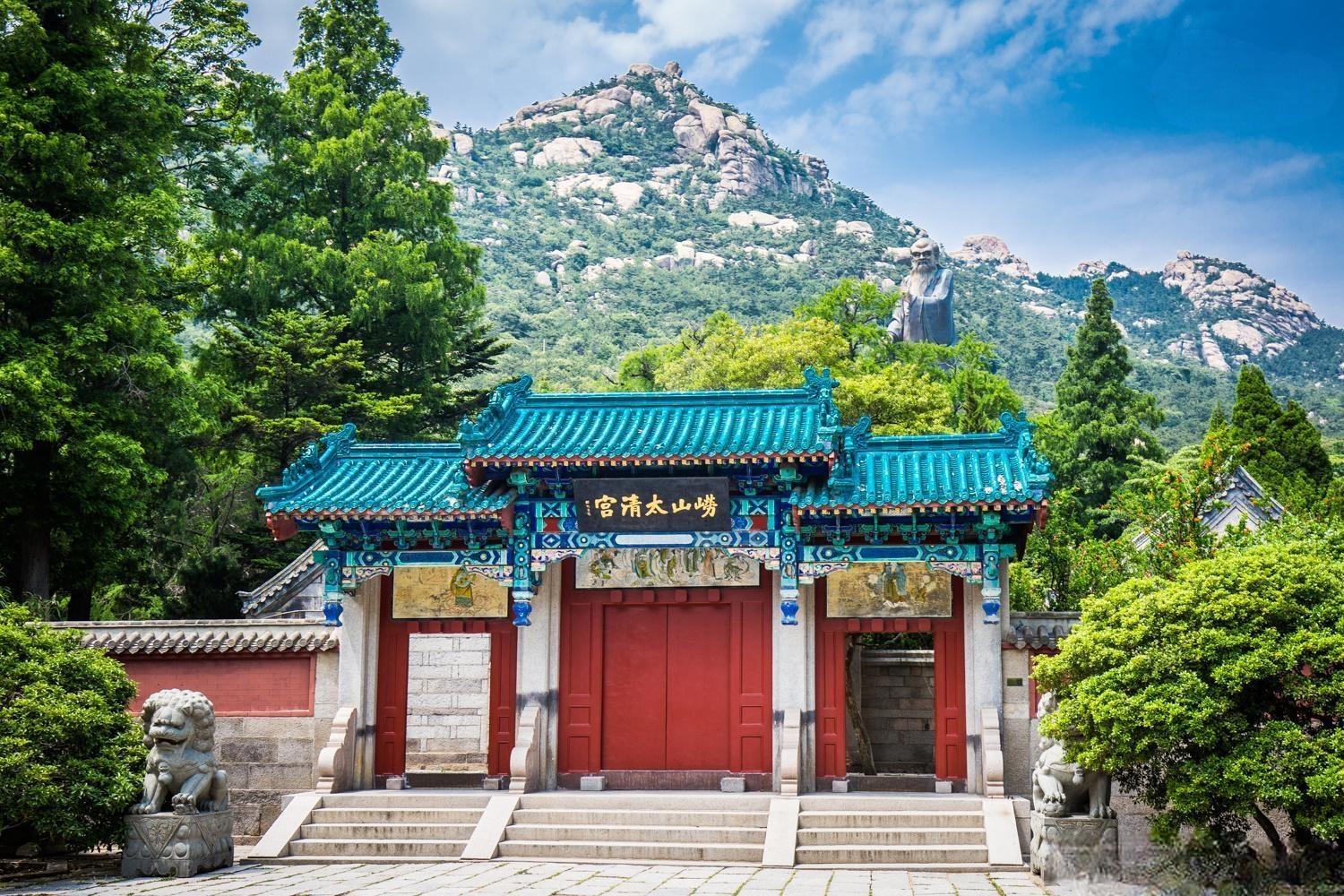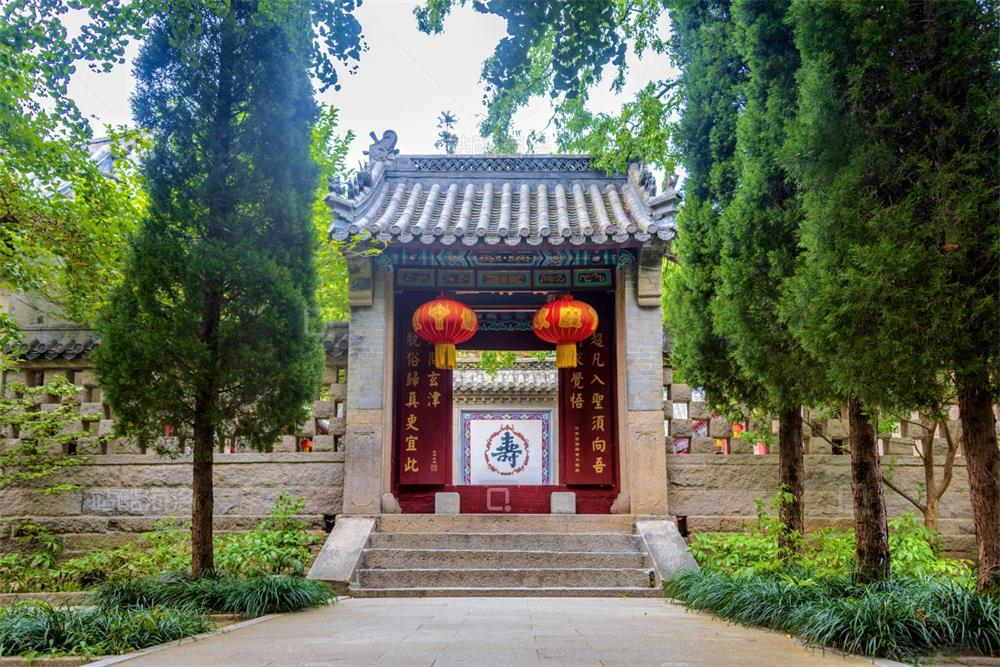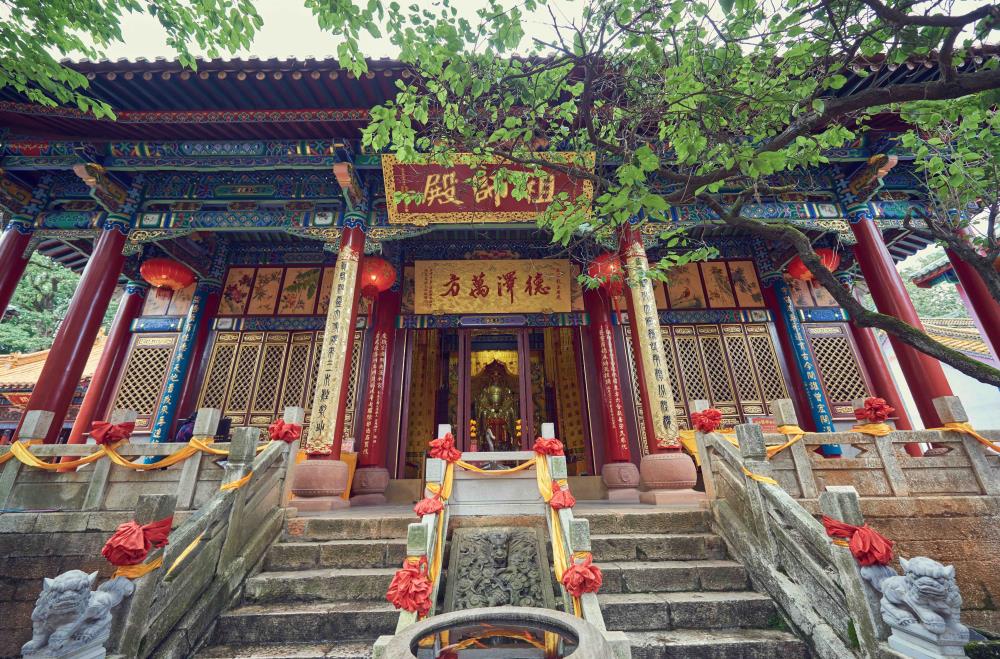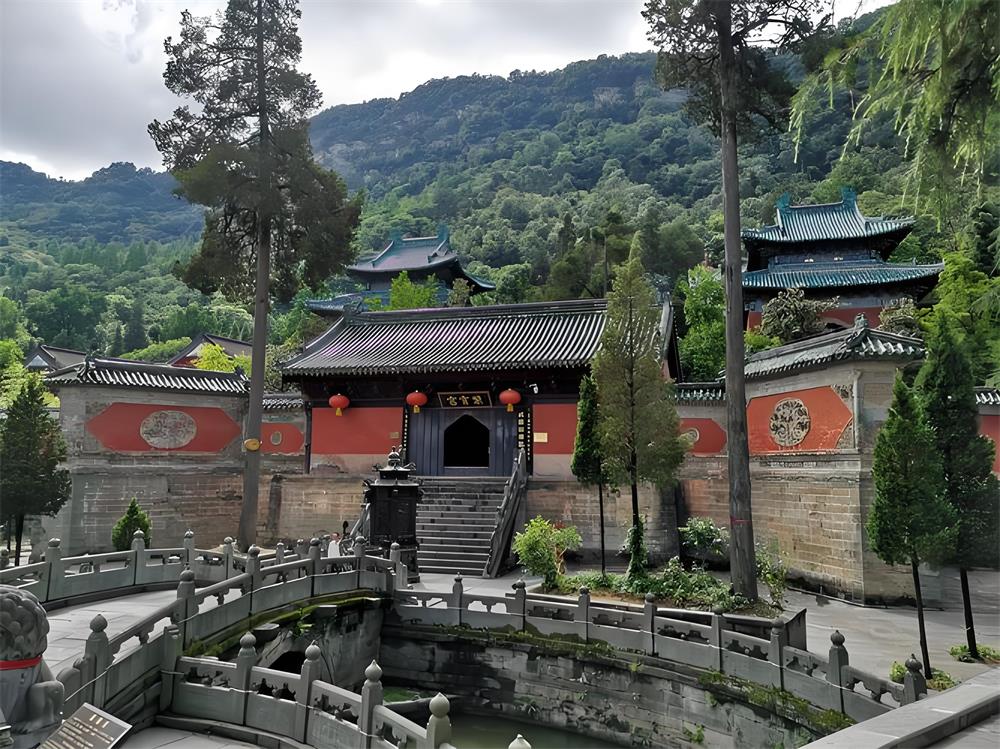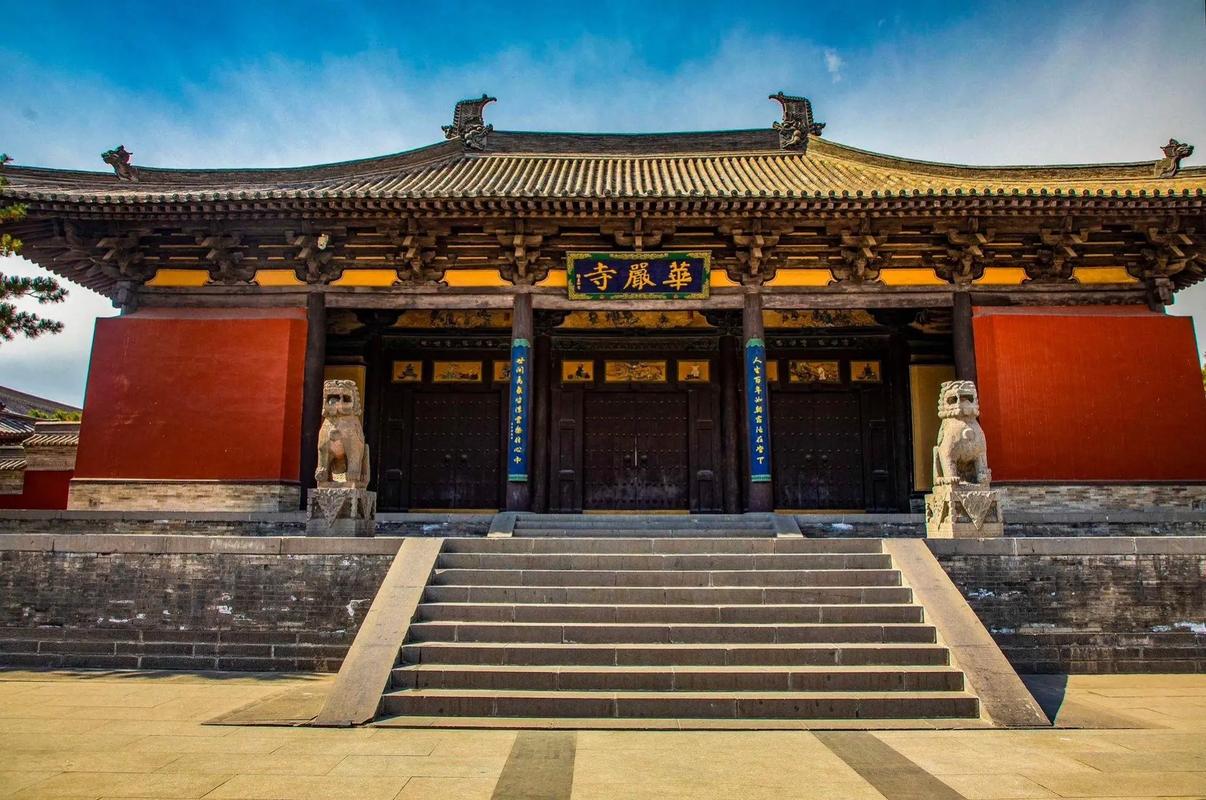Hualou Palace: The Hidden Sanctuary on the Sunset Ridge
Tucked away on the western branch of Laoshan, nestled beneath Hualou Peak, Hualou Palace (华楼宫) is a Taoist retreat unlike any other. Facing the Valley of the Setting Sun and backed by the steep cliffs of Biluo Rock, this temple remains a quiet witness to the passing of dynasties and the permanence of the Tao.

Founded in 1325 CE during the Yuan Dynasty, the palace was rebuilt multiple times in the Ming and Qing dynasties, always maintaining its spiritual essence despite centuries of change. Though damaged during the Cultural Revolution, it was fully restored in 2001 and remains a protected cultural relic of Qingdao.
A Mountain of Carvings and Poetry
Though smaller in size—just 2,000 square meters—Hualou Palace holds the greatest concentration of Taoist stone inscriptions in all of Laoshan. Many of these were left by renowned Quanzhen masters such as Qiu Chuji and Liu Zhijian, whose poetry, sutras, and Taoist reflections remain carved into the temple’s walls and surrounding cliffs.
One of the most famous inscriptions is the poetic line:
“Golden elixir spring purifies the dust of the world,”
—referring to the Jinye Spring, located behind the Laozi Hall, which flows year-round with sweet, clear water.

The site was so revered that in the Ming Dynasty, Shandong governor Zhao Xian called Hualou Peak “The First Famous Mountain Above the Sea” and commissioned stone steles to honor it. In the Qing period, scholars continued to inscribe verses into the cliffs, reflecting on impermanence, serenity, and the pursuit of immortality.
Architectural Simplicity with Symbolic Depth
Hualou Palace faces east and follows a rectangular courtyard design. The eastern hall honors Laozi, the central hall is dedicated to the Jade Emperor, and the western hall venerates Guan Yu, a deity of loyalty and protection in Taoism.
Surrounding the main structures are over ten small monk dwellings, shaded by ancient gingko and quince trees. The palace’s bamboo grove and quiet corners evoke a feeling of timelessness, where heaven and earth meet in quiet balance.
Inside the temple lies a rare manuscript copy of the Classic of Purity and Truth, as well as the Dao Xing Stele, authored by Yuan Dynasty official Zhao Shiyan, offering insight into the temple’s spiritual foundations.
A Place for Stillness and Strength
Unlike the larger temples of Taiqing or Taiping, Hualou Palace offers intimacy and solitude. It was often the place where Taoist masters came to retreat, meditate, and write. The surrounding cliffs echo with verse and the wind carries the weight of centuries of practice.

At Fengshuicharm, we visit Hualou Palace when we need silence, strength, and inner recalibration. The energy here is meditative, clean, and ancient. When we bless your spiritual items in this temple, they are infused with the focused stillness of the mountain and the flowing purity of Jinye Spring.
Whether you are navigating external noise or seeking a space to reconnect with your spiritual path, Hualou Palace invites you to slow down, breathe, and listen to the whispers of the stone.


